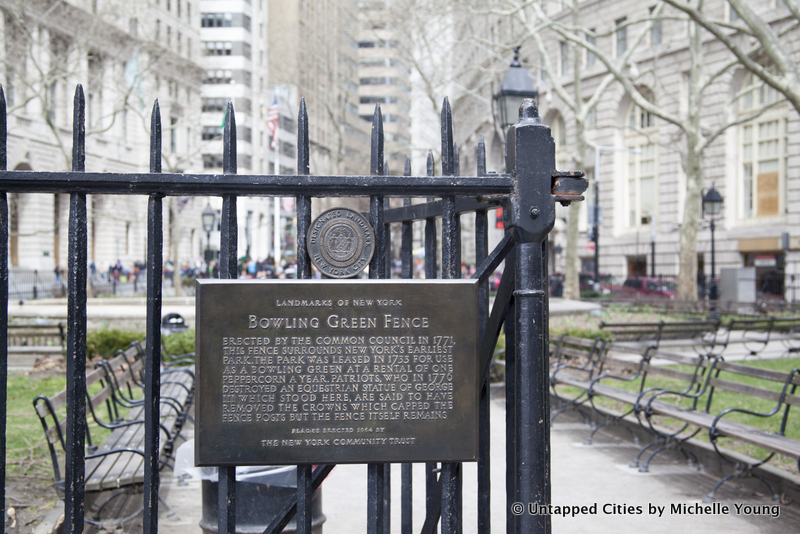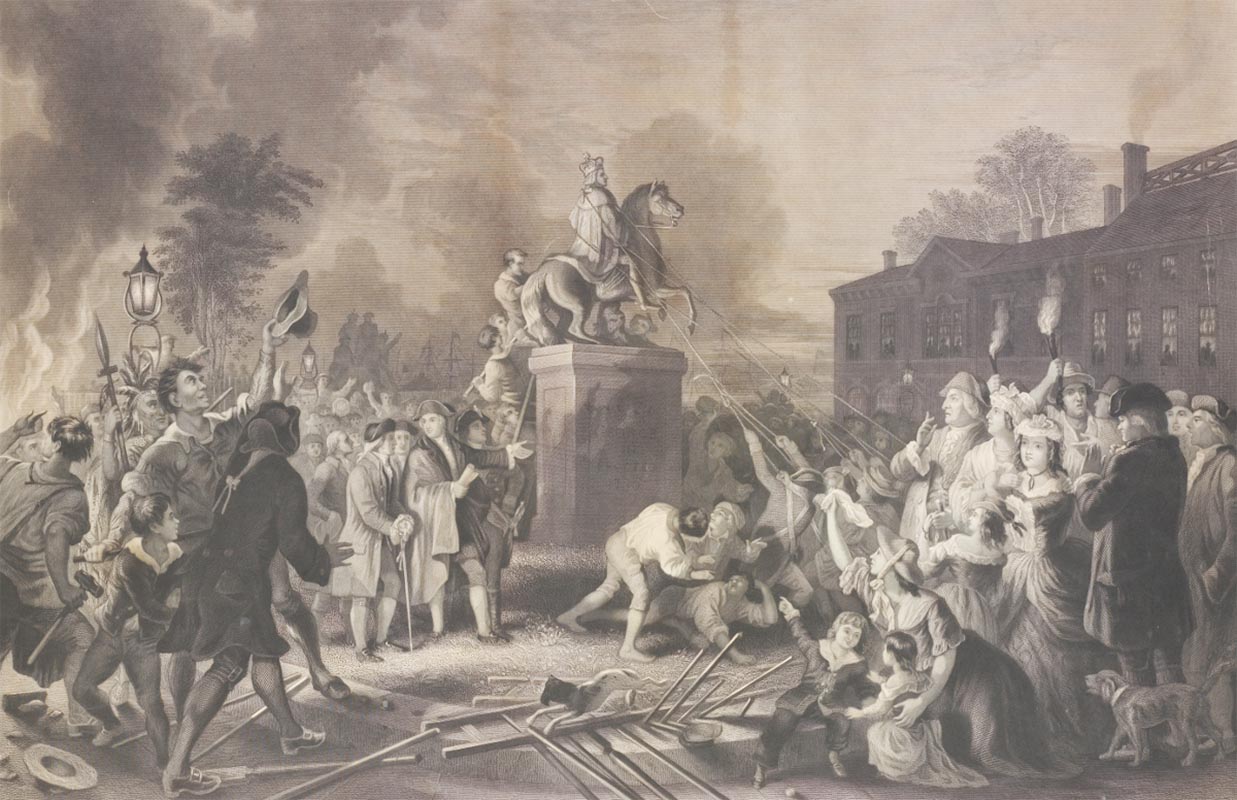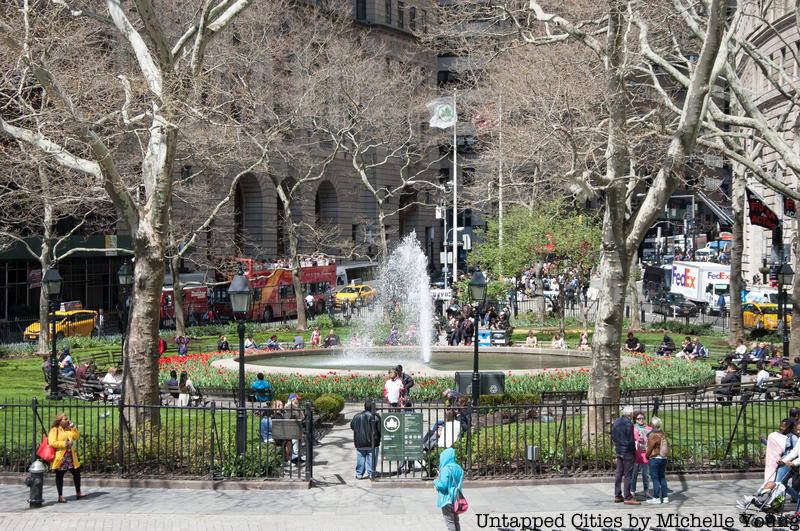We’re back with the video series “A City Full of History,” delving into the lesser known aspects of New York City history produced by Untapped Cities contributor Dan Thurber, who runs the YouTube channel Bookworm History. The first episode looked at a mostly-forgotten expedition by two Norwegians to take a rowboat across the Atlantic Ocean. This week we look at the history of Bowling Green.
Nestled in between the Battery and Wall Street, Bowling Green is one of the most popular tourist destinations in New York City. What many don’t realize is that this small, teardrop-shaped park is positively steeped in history. Originally established in 1733 as a park for lawn bowling (hence the name), Bowling Green would play an important role in the American Revolution, hosting one of the most famous demonstrations of American rebellion against the crown: the destruction of the statue of King George III. As much as Bowling Green has changed since those distant revolutionary days, there is one witness that bears the scars of those events: Bowling Green’s cast-iron fence. Come along with us on ‘City Full of History’, as we give this storied fence the spotlight it deserves!

Bowling Green was designated a park in 1733, but the wrought iron fence that surrounds it also dates back to the 18th century. It was installed in 1771 to protect a giant statue of King George III that was erected in the park six years earlier by the British government. Over the years, it came to serve as a gathering place for anti-English protests as tensions rose between Britain and her colonies; while New York’s oldest fence still stands today, it bears hefty scars from this era. The fence posts, once decorated with royal crown-shaped finials or iron balls, were sawed off on July 9th in an act of defiance by the Sons of Liberty and melted down for ammunition. The statue itself was torn down.
 Image from New York Public Library
Image from New York Public Library
The fence “fared better than the statue,” and was repaired in 1786. From 1914 to 1919, the fence was relocated to Central Park to accommodate the construction of the first subway line but was later rediscovered and returned back to Bowling Green. The Bowling Green fence was designated a New York City landmark in 1970, making it one of the more unusual preservation landmarks in the city.

Next, check out the Top 10 Secrets of Bowling Green and discover NYC’s Forgotten Holiday, Evacuation Day!
Touch the original fence and more on our tour of the Remnants of Dutch New Amsterdam:
Tour of The Remnants of Dutch New Amsterdam






